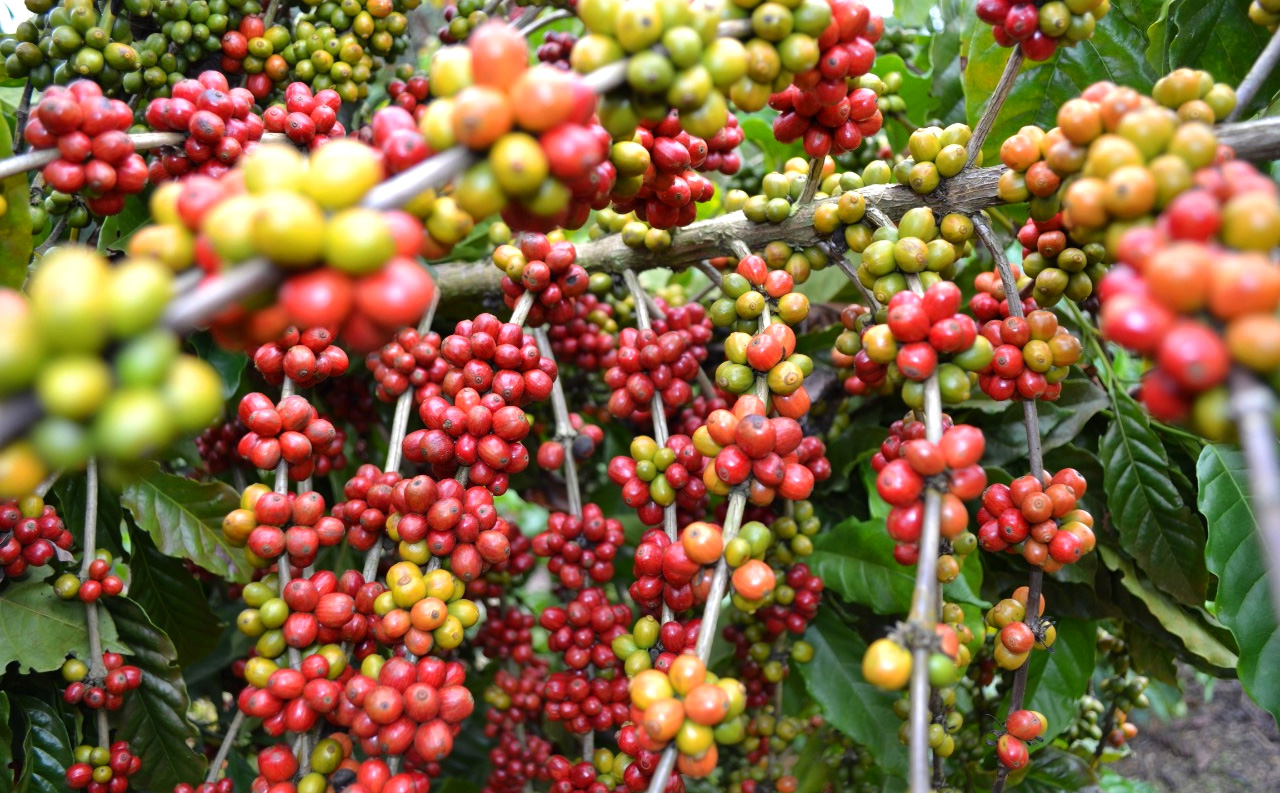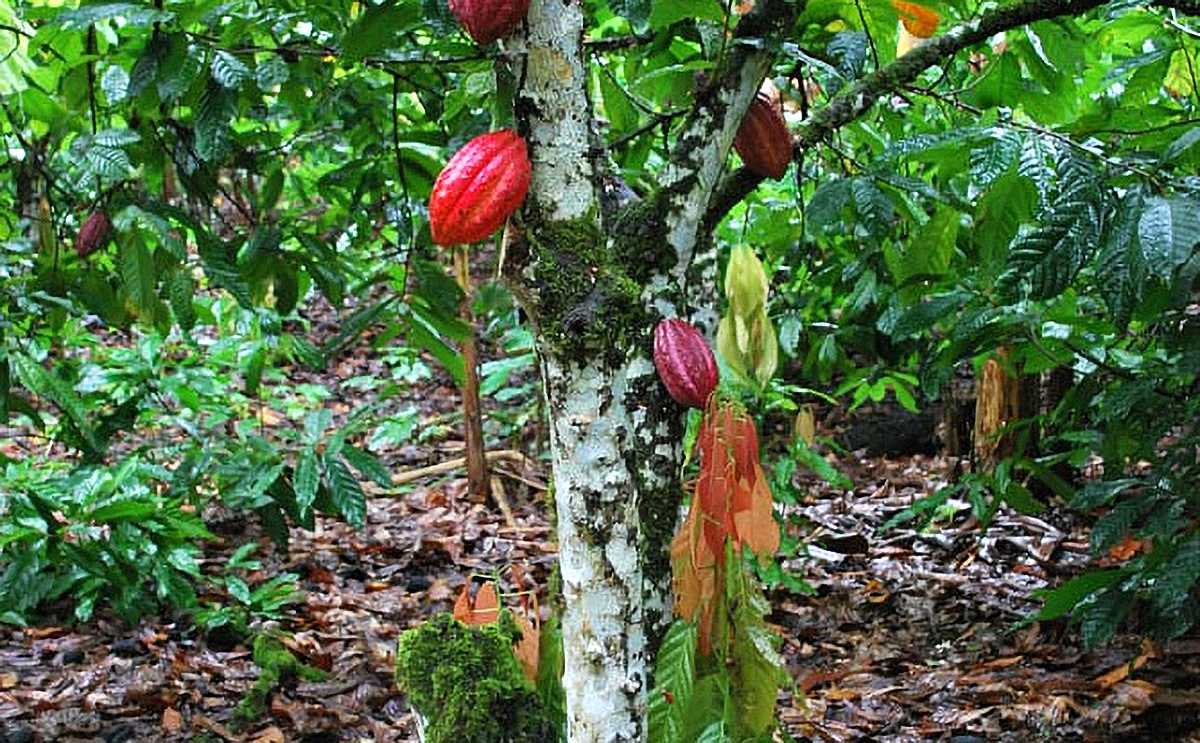Biofertilizer in Africa: Growing solutions for a growing population.
Africa is home to a rapidly growing population and increasing demand for
agricultural production. Biofertilizer offers a sustainable, innovative
solution with high quality results.

The increasing population has heightened the need for more agricultural production to address food
security concerns. African farmers, crucial to this effort, face challenges like poor soil quality, harsh
climates, economic limitations, and inefficient farming practices, all of which hinder crop yields.
Currently, nutrient management in African agriculture primarily relies on organic and chemical
fertilizers. Organic fertilizers, derived from plant and animal sources, have a long history but are limited
by issues of availability, cost, and management. Chemical fertilizers, while common, are expensive,
environmentally damaging, and contribute to soil degradation.
The negative impact of chemical fertilizers, including ecological damage and nutrient depletion in soils,
has led to a growing demand for sustainable agricultural practices. This shift has brought biofertilizers
to the forefront as a viable, eco-friendly alternative. Biofertilizers consist of beneficial microbes such
as arbuscular mycorrhizal fungi, rhizobacteria, and nitrogen-fixing rhizobia, which enhance plant growth
by improving nutrient supply. They play a crucial role in maintaining soil health and have been shown to
offer various benefits for sustainable agriculture, like nitrogen fixation and soil property improvement.
Globally, the biofertilizer market is expanding, with countries like Argentina, Canada, China, Europe,
India, and the United States leading the way. These nations have developed substantial markets for
biofertilizers and support their growth through strategies like privatization, commercialization, and
financial incentives. However, in Africa, the potential of biofertilizers remains largely untapped due to
inadequate market development, regulatory frameworks, and quality control. This has led to the
proliferation of low-quality biofertilizers, negatively affecting their acceptance and use among African
farmers.
Challenges such as poor formulations and packaging also contribute to the prevalence of low-quality
biofertilizers. To ensure market sustainability, it's essential to focus on producing high-quality
biofertilizers that are cost-competitive with conventional fertilizers. This involves using efficient strains
and suitable carrier materials for production.
Producing biofertilizers.
Producing biofertilizers involves a relatively simple and cost-effective process
compared to chemical fertilizers, yet it requires careful attention to several key factors.
These include choosing the right microbial strains, formulation types, carrier materials,
and application methods. The production process can be divided into six essential
steps:
- Isolation and Identification of Microbes: The first step is to isolate and identify
effective, non-toxic microbial strains that can enhance plant growth. These strains
are typically obtained from various natural sources such as soil, plant tissues, or the
rhizosphere. The functional characteristics of these microbes are assessed using
general laboratory techniques, which serve as a quick and affordable quality control
measure.
- Selection of Pure Culture: Once isolated, a pure culture of the target strain is
selected based on desired biofertilizer functions like nutrient solubilization, nitrogen
fixation, or phytohormone production. This involves in vitro testing for potency and
greenhouse experiments to evaluate efficacy before field trials. Advanced
molecular techniques are used to understand the mechanisms through which these
strains promote plant growth.
- Choice of Formulation Material: The third step is crucial in determining the
product's form, be it liquid, granular, powder, or slurry. The carrier material is
selected for its ability to keep the microbes viable and in the right quantity.
Propagation Method: This step involves cultivating the selected strains under
optimal conditions to maintain their inherent properties. This is typically done in
fermenters, using either solid-state or submerged fermentation.
- Prototyping: Various forms of the product are tested to identify the most effective
one for field performance.
- Field Testing: The final step is large-scale field testing to evaluate the product’s
efficiency and limitations across different ecological regions. This helps in
standardizing the process for commercial production.
For arbuscular mycorrhizal (AM) fungi, which have an obligate symbiotic relationship
with plants, the production process differs. AM fungi are multiplied through monoxenic
culture, where they are grown with a host plant in controlled conditions. This method
ensures the production of contaminant-free propagules and requires careful
consideration of soil nutrients and the host-AM fungi relationship.
Each of these steps is critical to ensure the production of high-quality, effective
biofertilizers that can support sustainable agriculture.
Carrier materials.
Carrier materials play a crucial role in the efficacy and stability of biofertilizers. They are used to
preserve and deliver viable microbes to the field in optimal conditions. Understanding the types,
properties, and uses of these materials is key to successful biofertilizer production.
Types and Forms of Carrier Materials.
- Solid Forms: These include tablets, granules, or powders, made from materials like perlite, talcum
powder, charcoal, or soil aggregates.
- Organic Materials: Sterilized oxalic acid industrial waste, composted sawdust, wheat bran, peat, and bagasse are common organic carriers.
- Inorganic Materials: Inorganic carriers include materials like kaolin, vermiculite, and diatoms.
- Synthetic Options: These can include various synthetic substances designed to maintain microbial viability.
Liquid Biofertilizers.
For liquid biofertilizers, carriers often include organic oils, water, or water-in-oil emulsions. They also
contain cell protectants that help in forming dormant spores or cysts, extending shelf life and field
effectiveness.
Characteristics of Ideal Carrier Materials.
- Cost-Effectiveness: They must be affordable to ensure the final product is economically viable
for farmers.
- Non-Toxicity and Safety: Carriers should be safe for both the environment and the crops.
- Availability: Readily available in large quantities.
- Ease of Application: Simple to apply in the field.
- Physicochemical Properties: Suitable pH buffering, high water-holding capacity, and uniformity are essential for optimal microbial growth.
Quality and Sterilization.
1.
Quality Issues
Poor packaging and storage can lead to contamination, reduced shelf life, and diminished field effectiveness.
2.
Limited Resources
There is a lack of investment and infrastructure for producing and distributing biofertilizer in many regions.
3.
Quality Control
The production of biofertilizer requires strict quality control measures to ensure its effectiveness.
The history of biofertilizer production and application in Africa.
- Initial Introductions: Although the exact date of introduction in
Africa is uncertain, there are significant historical milestones. For
instance, commercial biofertilizer use in South Africa dates back to
1952, while earlier applications, particularly of mycorrhizal inoculated
soil, were reported in what is now Zimbabwe as early as 1928 for pine
plantation development.
- Early Failures and Successes: An example of early challenges
includes the unsuccessful introduction of Pinus patula in Malawi in
1923, which later succeeded with the application of mycorrhizal
inoculated soil from Zimbabwe.
Current State and Development Efforts
- Pilot Stage Production: Despite its long history, biofertilizer
production and application in Africa mostly remain in the pilot or
experimental stages, with limited commercial scale production.
- International Support and Initiatives: UNESCO and NifTAL initiated
programs in the 1980s to enhance research, development, and
technological capabilities in biofertilizers. The N2Africa project was
specifically aimed at promoting the use of rhizobia inoculants.
- Role of Organizations: These initiatives focus on identifying and
addressing challenges in inoculant development, conducting targeted
research, and managing microbial cultures suitable for regional crops.
Regional Variations in Adoption
- Low Adoption Rates: Despite international efforts, adoption rates of
biofertilizers remain relatively low, particularly in Central and West
Africa.
- Varying Levels of Usage: Some African countries, like Kenya, Malawi,
South Africa, and Zimbabwe, have seen more significant development
and use of inoculants, though still not at a fully commercial level.
Challenges and Future Prospects
- Barriers to Adoption: A combination of factors such as lack of
awareness, limited access to technology, economic constraints, and
insufficient infrastructure contribute to the slow adoption of
biofertilizers in many African regions.
- Potential for Growth: Given the increasing focus on sustainable
agriculture and the need for eco-friendly farming practices, there is
significant potential for the growth and wider adoption of biofertilizers
in Africa.
- Strategic Partnerships: Continued support from international
agencies and collaboration between local governments, research
institutions, and farmers will be crucial in overcoming existing barriers
and enhancing the use of biofertilizers across the continent.
Understanding and addressing these historical, current, and future
aspects of biofertilizer use in Africa is essential for advancing sustainable
agricultural practices and improving food security in the region.
Regional Challenges and Opportunities
East Africa
Tanzania, Uganda, Rwanda, and
Mozambique are all major
producers of coffee, tea, and
other crops. Wide-spread use
of biofertilizer can significantly
improve yields, but distribution
is a challenge due to limited
resources.
Central Africa
Cocoa is a major crop in the
region. The use of biofertilizer
can increase soil fertility and
improve yields, but there is a
need for increased investment
in production and distribution.
West Africa
Rice is a staple crop in the
region. Biofertilizer can help
increase yield and improve soil
health, but there are challenges
in distributing the product to
farmers.
Northern Africa
Olives and other crops are
important to the region. The
use of biofertilizer can help
improve soil health and
increase production, but
awareness and funding are key
challenges.
Southern Africa
Southern Africa agricultural
productivity could increase by
up tp 2-3 times, if better farm
inputs and production
technologies are adopted,
water and soil resources are
used more efficiently, and
natural capital and ecosystems
are restored.
East Africa.
In East Africa, the development and utilization of biofertilizers vary across countries, with Kenya leading
in terms of a more established production and application infrastructure. Other nations like Tanzania,
Uganda, Mozambique, and Rwanda have also made progress in this field. Here's a closer look at the
situation in this region, particularly in Kenya:
Kenya's Biofertilizer Landscape
- MIRCEN Laboratory: The Microbiological Resource Centre (MIRCEN) laboratory at the University of
Nairobi, operational for over three decades, plays a pivotal role in advancing biofertilizer technology
in East Africa, supported by UNESCO.
- Biofix: A major product in Kenya's inoculant market is Biofix, a rhizobial inoculant developed by MEA
Fertilizers Ltd and licensed by the University of Nairobi, MIRCEN. It has shown remarkable
effectiveness compared to traditional nitrogen fertilizers, both in cost and quantity needed for
application.
- Adoption Challenges: Despite its effectiveness, Biofix suffers from underutilization, likely due to a
lack of awareness among farmers. Efforts to increase adoption include packaging the product in
smaller quantities suitable for smallholder farmers.
- Crop-Specific Usage: As of 1990, a significant portion of Biofix was used for common bean
cultivation, with other crops like lucerne, soybean, and tick clover also benefiting from it.
- KEFRIFIX: Produced by the Kenya Forestry Research Institute’s Biotechnology laboratory, KEFRIFIX
is another important biofertilizer used for inoculating seedlings.
- Limited Commercialization: Despite these products, biofertilizer usage in Kenya remains low, with
production primarily based on specific orders rather than large-scale commercialization.
Broader East African Context
- Regional Development: Other countries in the region are also engaging in biofertilizer production
and application, with varying degrees of success and challenges similar to those faced by Kenya.
- Policy and Regulation: In Kenya, steps towards developing a regulatory framework, such as the
draft biofertilizer and soil conditioners bill, indicate progress in formalizing and potentially boosting
the biofertilizer sector.
- Awareness and Education: A common challenge across the region is the lack of farmer
awareness and education regarding the benefits and usage of biofertilizers.
Future Prospects
- Increased Awareness and Adoption: Efforts to educate farmers and promote biofertilizers could
lead to increased adoption, especially among smallholder farmers.
- Policy Support: The development of supportive policies and regulatory frameworks can facilitate
the growth of the biofertilizer market.
- Research and Development: Ongoing research and innovation are essential to improve
biofertilizer effectiveness, suitability for various crops, and adaptability to different environmental
conditions.
In summary, while East Africa, and particularly Kenya, shows promise in the field of biofertilizers, there
are still significant barriers to widespread adoption. Overcoming these challenges will require
concerted efforts in awareness raising, research, policy development, and infrastructure support.
Tanzania
- FAO Support: In 1990, the FAO supported a project to establish
efficient rhizobial strains and fermenter equipment at the University of
Dar-es-Salaam.
- Training and Development: The University of Nijmegen, Netherlands,
provided specialized training to Tanzanian microbiologists in rhizobium
inoculant research and development.
- Major Inoculants: Products like Biofix and Legumefix, and a locally
developed Nitrosua, are key inoculants used in Tanzania, with
distribution facilitated by the university's extension services and
partnerships.
Uganda
- Inoculant Production: Makerere University and Madhvani Sugar
Company Ltd are central to inoculant production, with products like
Bio-N-Fix.
- International Collaboration: The staff received specialized training
under FAO projects and were part of the MIRCEN network to promote
biofertilizer technology.
- Product Specifications: Inoculants are produced with stringent
quality controls, ensuring viable microbial cell counts and sterile
conditions.
- Challenges: A lack of awareness about biotechnology and limited
expertise have slowed the development of biofertilizers in Uganda.
Rwanda
- Early Initiatives: The FAO assisted in establishing an inoculum
production unit in Rwanda, which was productive until the civil war in
1994.
- War Impact and Recovery: The civil war led to the destruction of
microbial strains and equipment, but subsequent rehabilitation efforts
showed improvement until challenges like inadequate equipment and
staffing emerged.
Mozambique
- Import Dependency: Mozambique largely relies on imported
inoculants due to the absence of local production facilities.
- Field Trials and Imported Products: Trials showed that imported
products like Biagro and Biofix were effective, but the lack of a
distribution network limits access, especially in rural areas.
- Soybean Production Drive: The growing soybean production sector
is increasing demand for inoculants.
- Need for Government Intervention: Financial support for equipment
acquisition and institutional development, as well as biofertilizer
regulations and policies, are essential for enhancing local production.
Regional Summary
- Varied Stages of Development: Each country is at a different stage
of biofertilizer technology development and adoption, with varying
degrees of success and challenges.
- Challenges: Key issues include a lack of local production facilities,
limited awareness and education about biofertilizers, and inadequate
distribution networks.
- Opportunities for Growth: With rising demand, especially in crops
like soybean, there's significant potential for growth in the biofertilizer
sector in these countries.
For these East African countries, advancing biofertilizer technology
involves not only enhancing production capacities and distribution
networks but also increasing awareness among farmers and improving
regulatory frameworks to foster private sector involvement.
Central Africa.
In Central Africa, particularly in the Democratic Republic of Congo (DRC)
and Cameroon, the development and application of biofertilizers are
progressing, albeit at varying paces and with different challenges and
opportunities.
Democratic Republic of Congo (DRC)
- N2Africa Project: This project, focusing on improving legume yield,
nitrogen fixation, and family income, has made significant strides in the
DRC, particularly in the eastern provinces.
- Impact on Soybean Yield: The use of Rhizobium inoculant, introduced
to over 17,000 smallholder farmers, has notably improved soybean
yields in South Kivu.
- Economic Benefits: The cost-benefit analysis shows substantial
profits from using the inoculant, considering the investment cost
versus the return from increased soybean yield.
- Secondary Benefits: Increased plant biomass has also led to a rise in
animal feed production, boosting beef and dairy production among
farmers.
- Future Interventions: To further increase biofertilizer usage, focus
should be on providing access to high-quality inoculants and training
farmers in their correct application.
Cameroon
- Early Usage: Historical evidence shows the transfer of mycorrhizal
inoculum for pine plantations between Cameroon and Nigeria in the
1950s.
- Current Status: Despite these early instances, there seems to be no
large-scale commercial production of biofertilizers or a
comprehensive regulatory framework in place.
- Laboratory Production and Research: Studies have been conducted
on rhizobial biofertilizers for legume cultivation, and there are facilities
like the Biotechnology Centre of the University of Yaoundé and IRAD
that have collections of beneficial strains for biofertilizer production.
General Observations for Central Africa
- Limited Commercialization: Both countries show potential in
biofertilizer technology, but there's a notable absence of large-scale
commercial production.
- Need for Regulatory Frameworks: The lack of comprehensive
regulatory and quality control frameworks is a significant barrier to
the development of the biofertilizer sector.
- Research and Development Focus: Ongoing research and
laboratory production indicate an interest in biofertilizer technology,
but more concerted efforts are needed for commercialization.
- Potential for Impact: Given the demonstrated benefits in the DRC,
there is significant potential for biofertilizers to enhance agricultural
productivity and livelihoods in Central Africa.
For Central Africa to fully harness the benefits of biofertilizers, there
needs to be an emphasis on developing regulatory frameworks,
expanding commercial production, and enhancing farmer awareness and
training. These efforts could significantly contribute to sustainable
agricultural practices and improved food security in the region.
West Africa.
In West Africa, the development and application of biofertilizers present a mixed picture, with varied
levels of progress across different countries. The region faces unique challenges in advancing
biofertilizer technology and its widespread adoption among farmers.
Nigeria
- Historical Application: Inoculant application in Nigeria dates back to the 1950s with pine trial
experiments, but biofertilizer production remains underdeveloped.
- IITA's Contribution: The International Institute of Tropical Agriculture developed Nodumax, an
efficient rhizobium inoculant for legume cultivation.
- Variety of Inoculants: A range of biofertilizers, including Histick, TSBF mixture, and Legumefix, have
been used in field studies.
- Potential Market Size: Nigeria has a significant potential demand for biofertilizers, especially for
soybean cultivation.
- Regulatory Development: NAFDAC, in collaboration with the COMPRO II project, is working on
registration guidelines and quality control for biofertilizers.
Senegal
- Microbiological Research: The Microbiological Resource Centre in Dakar is a key player in
inoculum research and field trials.
- Small-Scale Production: Despite over 30 years of existence, biofertilizer production remains very
small-scale.
- Education and Awareness: Efforts like village-based science education activities aim to improve
awareness and application of biofertilizers.
- Specialized Research: The French Institute of Scientific Research for Cooperative Development in
Dakar focuses on legume-rhizobium symbioses and Frankia spp.
Ghana
- Underdeveloped Industry: There is no commercial biofertilizer production in Ghana; inoculants
are imported for research purposes.
- Importation and Collaboration: Under collaborations like N2Africa, significant quantities of
inoculants have been imported.
- Regulatory Framework Development: The Ministry of Food and Agriculture is developing a
regulatory framework for fertilizer quality control, including biofertilizers.
- Standard Operating Procedures: SOPs for biofertilizer testing are being developed and validated
by Kwame Nkrumah University of Science and Technology.
General Challenges in West Africa
- Low Usage Among Farmers: Inoculant application is not common, partly due to the lack of
intensive livestock and commercial soybean production.
- Lack of Commercial Production Facilities: Most West African countries lack facilities for
commercial biofertilizer production.
- Regulatory and Quality Control Issues: Comprehensive regulations and quality control strategies
are often not in place.
- Need for Collaboration and Funding: The development of biofertilizers is hampered by
inadequate funding, lack of equipment, and experienced personnel, as well as insufficient
collaboration with the private sector.
- Awareness and Technical Know-How: There is a general lack of awareness and technical
expertise regarding biofertilizers.
To enhance the development and adoption of biofertilizers in West Africa, there needs to be a
concerted effort in research and development, regulatory framework establishment, farmer education,
and collaboration between government, academic institutions, and the private sector. Such efforts
could help unlock the potential of biofertilizers to improve agricultural productivity and sustainability in
the region.
Northern Africa.
In Northern Africa, particularly in Egypt and Morocco, the development
and application of biofertilizers have seen varying levels of support and
advancement, highlighting the region's engagement in sustainable
agricultural practices.
Egypt
- Biotechnology MIRCEN: Located at Ain-Shams University in Cairo,
this Microbiological Resource Centre (MIRCEN) has been pivotal in
biofertilizer research and training since 1978, serving Arab and North
African countries.
- Biofertilizer Unit: Established in 1980, this unit focuses on culture
isolation, collection, and research for biofertilizer development and
production.
- Government Subsidies: The retail price of rhizobial biofertilizer is
subsidized by the Egyptian government, making it affordable for
farmers.
- Cyanobacteria Biofertilizer: The Ministry of Agriculture supports the
production of Cyanobacteria biofertilizer for rice cultivation, covering
over 40,000 hectares.
Morocco
- Research and Trial Studies: The Institut Agronomique et Veterinaire
Hassan II, through its Soil Microbiology Laboratory, coordinates
biofertilizer research, focusing on legumes and N-fixing trees.
- Commercial Production: Companies like Elephant Vert Maroc have
made significant investments in biofertilizer production, with facilities
in Meknes producing substantial quantities annually.
- Product Range: The manufactured biofertilizers include products like
Fertinova and Novastim, which are fungal- and bacterial-based and
rich in natural nutrients.
Regional Overview
- Advancement in Research and Production: Both Egypt and
Morocco demonstrate considerable advancement in biofertilizer
research and commercial production, indicating a growing recognition
of the importance of sustainable agriculture in the region.
- Government Support: In Egypt, government subsidies play a crucial
role in making biofertilizers affordable and accessible to farmers,
showcasing a commitment to promoting sustainable farming
practices.
- Commercial Ventures: Morocco's private sector involvement,
exemplified by companies like Elephant Vert Maroc, indicates a viable
market for biofertilizers and a potential for expansion.
Challenges and Opportunities
- Scaling Production and Use: While there are significant
developments in research and commercial production, scaling up the
use of biofertilizers across wider farming communities remains a
challenge.
- Awareness and Education: Increasing farmer awareness and
education about the benefits and application of biofertilizers is crucial
for broader adoption.
- Policy Support and Investment: Continued government support,
policy development, and investment in research and production
facilities are key to fostering the growth of the biofertilizer sector in
Northern Africa.
Northern Africa's engagement in biofertilizer technology highlights its
potential to enhance agricultural productivity and sustainability, providing
a model that can be replicated and adapted in other regions of Africa and
beyond.
Southern Africa.
The production and application of biofertilizers in Southern Africa,
particularly in Zimbabwe, Zambia, Malawi, and South Africa, have
undergone various stages of development, each characterized by unique
challenges and innovations. Here's a detailed look at the situation in each
of these countries:
Zimbabwe
- Established Facilities: Zimbabwe houses one of the largest
biofertilizer facilities in sub-Saharan Africa at the Grasslands Research
Institute, Marondera, managed by the Soil Productivity Research
Laboratory (SPRL).
- Historical Production: SPRL began producing legume inoculants in
1962 and soybean inoculants using Bradyrhizobium japonicum strains
since 1967.
- Innovative Carrier Material: Bagasse, a sugarcane waste product,
has been used as the primary carrier material to enhance profitability.
- Production Process: Involves a 4-step process - carrier processing,
inoculant-broth processing, inoculation, and curing of inoculant bags
with quality control.
Zambia
- Early Studies and Programs: Initial studies on soybean nodulation
began in 1963, leading to the commercialization of inoculants in 1976.
- Challenges in Availability and Storage: Remote areas faced issues
with inoculum availability and storage technologies, leading to low
growth and demand.
- USAID Support: USAID's collaboration with the University of Hawaii's
NifTAL project significantly boosted rhizobial biofertilizer production
and efficiency.
- Increased Soybean Cultivation: The support led to a substantial
increase in inoculated soybean cultivation and yield, with significant
sales of the “Nitrozam” variety.
Malawi
- Early Soybean Trials: Biofertilizer activities with soybean date back to
1951, with significant developments in the 1970s.
- Chitedze Biofertilizer: The Chitedze Agricultural Research Station
produced a widely used commercial biofertilizer for legumes.
- Challenges and Strategies: Despite potential demand, challenges in
quality control and limited biofertilizer importation have hindered
production. Initiatives like public-private partnerships aim to boost
production.
Regional Challenges and Opportunities
- Quality Control and Extension Services: Persistent issues with
quality control and extension services across these countries have
impacted the use of inoculants.
- Market Fluctuations: The collapse in crop prices, such as soybeans,
has negatively affected demand and production.
- Government and Private Sector Involvement: Both government
initiatives and private sector engagement are crucial for overcoming
these challenges and boosting production.
In summary, while Southern Africa has seen notable developments in
biofertilizer production and application, each country faces unique
challenges and opportunities. Continued innovation, government support,
and market development are key to expanding the use of biofertilizers in
the region.
Biofertilizer quality standards in Africa.
Biofertilizer quality control in Africa, as in many parts of the world, is a complex issue due to the
absence of universal standards and the varied nature of national regulations. This situation presents
unique challenges and opportunities for the development and standardization of biofertilizers on the
continent.
Challenges in Establishing Quality Standards
- Inadequate Knowledge: There's a general lack of comprehensive knowledge about biofertilizer
production and quality control in many African countries.
- Lack of Production Facilities: The absence of adequate production facilities hinders the
development of quality biofertilizers.
- Absence of Universal Standards: Unlike regions like the United States, Canada, and India, where
more established guidelines exist, many African countries lack comprehensive or finalized quality
standards for biofertilizers.
Current State of Biofertilizer Standards in Africa
- Variation in Standards: African countries have varying degrees of regulations and guidelines,
many of which are still in draft form or not comprehensive.
- Kenya and Uganda: These countries have made some progress towards establishing quality
parameters, albeit still in draft stages and somewhat similar to Indian standards.
Key Quality Parameters for Biofertilizers
- Microbial Viability and Density: The quality largely depends on the viability and population of
microbial strains. For bacteria, this is typically > 1 × 10^8 CFU/mL for liquids and > 5 × 10^7 CFU/g
for solids. For mycorrhiza, a minimum of 100 viable propagules per gram is deemed satisfactory.
- Carrier Material Properties: The physicochemical properties of the carrier material are crucial in
maintaining microbial viability.
- International Examples: Countries like China have established specific parameters, including
particle size, organic matter content, moisture content, pH, expiry date, and level of contaminants.
Quality Control Techniques
- Use of a Mother Culture: This involves preserving a culture on media and refrigerating it to
minimize genetic damage and loss of plant growth-promoting capabilities.
- Efficiency Character: For instance, N-fixing rhizobacteria should show effective nodulation on
host roots, and phosphate solubilising products must be effective in the field.
- Organic Matter Content and Shelf-Life: Products should contain not less than 20% organic
matter and have a shelf life of at least six months, whether solid or liquid.
Strategies for Improvement
- Government Interventions: Developing adequate policies, guidelines, and quality control
management is crucial for improving biofertilizer production across Africa.
- Regional Collaboration: Learning from countries with more advanced regulatory frameworks
could help in establishing standardized guidelines.
- Research and Development: Investing in research to understand local microbial strains and
appropriate carrier materials can enhance the quality of biofertilizers tailored to specific regional
needs.
In summary, while there are significant challenges in standardizing biofertilizer quality in Africa, there
are also opportunities for growth and improvement. Developing comprehensive guidelines and
investing in research and development can help African countries harness the full potential of
biofertilizers in sustainable agriculture.
Proper storage of biofertilizers.
Key Factors Affecting Storage
- Temperature: It's one of the most critical factors. While a lower
temperature (around 4 °C to 5 °C) is generally recommended for
longer shelf life, this can vary depending on the type of
microorganism. For instance, Azotobacter venelandii showed optimal
storage at 5 °C for up to 90 days, whereas Burkholderia spp. had
better growth at 28 °C.
- Humidity: High humidity can adversely affect the biofertilizer,
especially if it leads to condensation and moisture build-up.
- Sunlight Intensity: Direct exposure to sunlight can be detrimental to
the viability of the microbes in biofertilizers.
Best Practices for Storage
- Cool Storage: Storing biofertilizers in a cool place, like a refrigerator, is
often recommended to preserve their quality.
- Temperature Consistency: Maintaining a consistent storage
temperature that suits the specific type of microorganism in the
biofertilizer is essential.
- Pre-Use Incubation: If a biofertilizer stored at a low temperature
needs to be used, it might require incubation at a higher temperature
(such as 26 °C) for several days to initiate microbial multiplication and
reach the required viable cell count.
Global Biofertilizer Opportunities and Future Prospects for Africa.
Global Biofertilizer Opportunities and Future
Prospects for Africa.
The global biofertilizer market is projected to grow at a CAGR of 12.3% from
2019-2025, providing opportunities for Africa to further expand its production
and market share.
Sustainable Agriculture
Biofertilizer is a key component in sustainable agriculture practices around the world
Increasing Yield
Biofertilizer has been shown to increase crop production and improve yields.
Achieving Food Security
As the world population grows, biofertilizer offers a sustainable solution to achieve global food security.
- Economic and Environmental Fit: Biofertilizers are particularly suitable for African countries
where labor is relatively inexpensive, and agrochemical inputs are costly and less accessible.
- Market Segmentation Potential: African countries can explore different segments of the
biofertilizer market, including various microbial strains and application methods, to find their niche.
- Learning from Others: Regions like Asia, North America, and Europe, with stringent regulations to
promote biofertilizers, provide models for Africa to develop its market.
- Policy and Regulatory Frameworks: Establishing strong policies and regulatory frameworks is
crucial for the development of the biofertilizer market in Africa.
Challenges and Strategies
- Current Low Utilization: Africa, currently grouped in the 'Rest of the World' category, accounts for
only about 5% of the global biofertilizer application.
- Awareness and Education: Increasing awareness among farmers and agribusinesses about the
benefits of biofertilizers is essential.
- Infrastructure Development: Investing in production facilities and distribution networks will be
key to market growth.
- Research and Development: Focusing on R&D to develop biofertilizers suited to African soil types
and climate conditions can enhance market relevance.
- Public-Private Partnerships: Collaborations between governments, research institutions, and
private companies can drive innovation and market expansion.
In summary, while the biofertilizer market in Africa is currently small, the global trends and increasing
focus on sustainable agriculture offer substantial opportunities for growth. By developing appropriate
strategies, policies, and infrastructure, African countries can tap into this growing market, benefiting
both their economies and their agricultural landscapes.

















